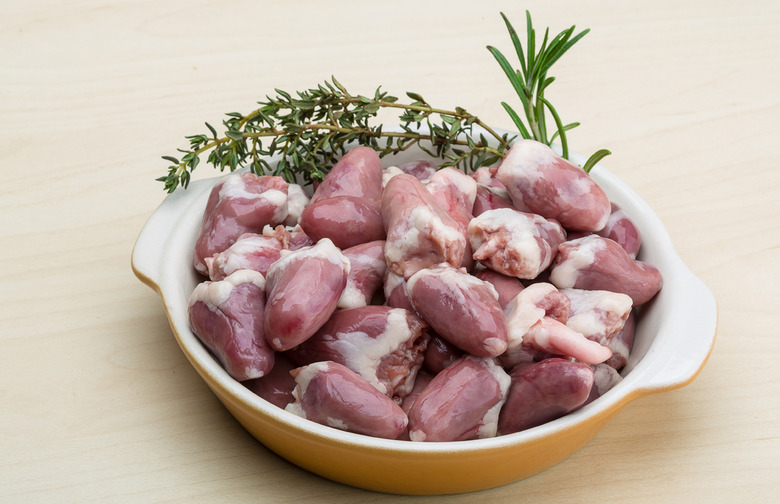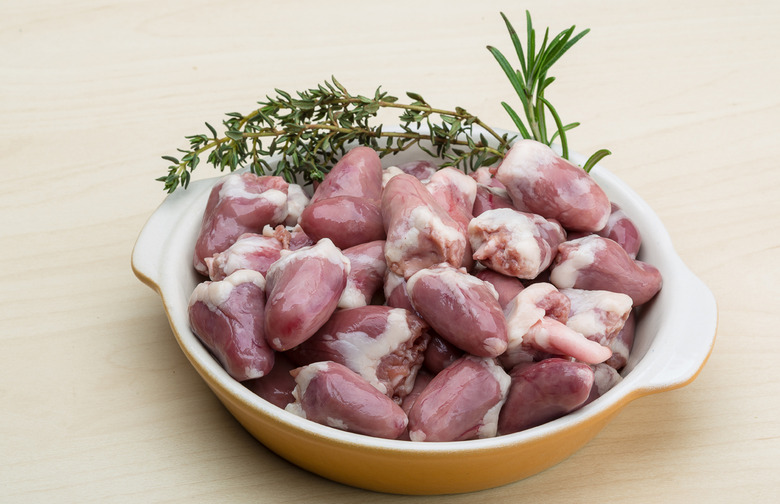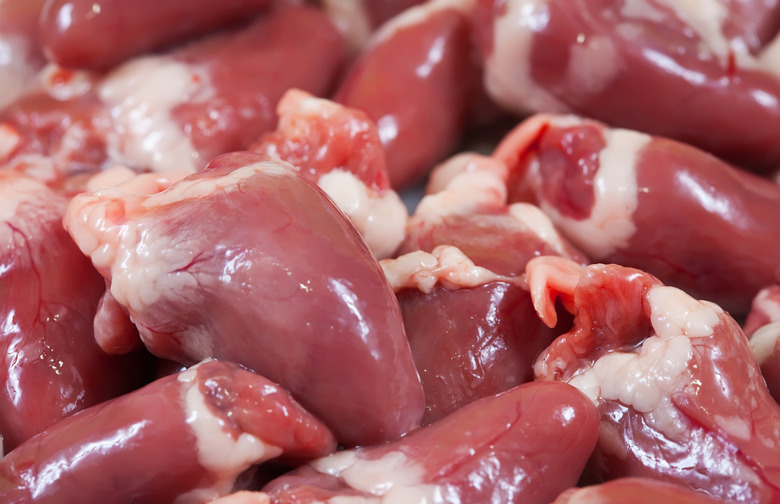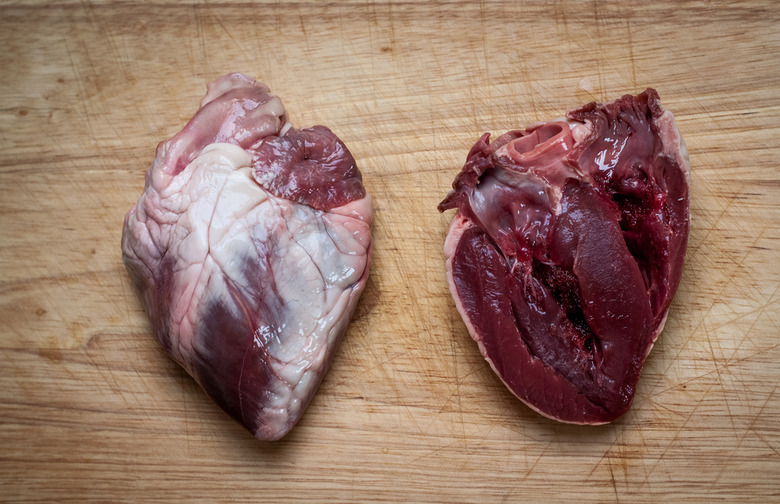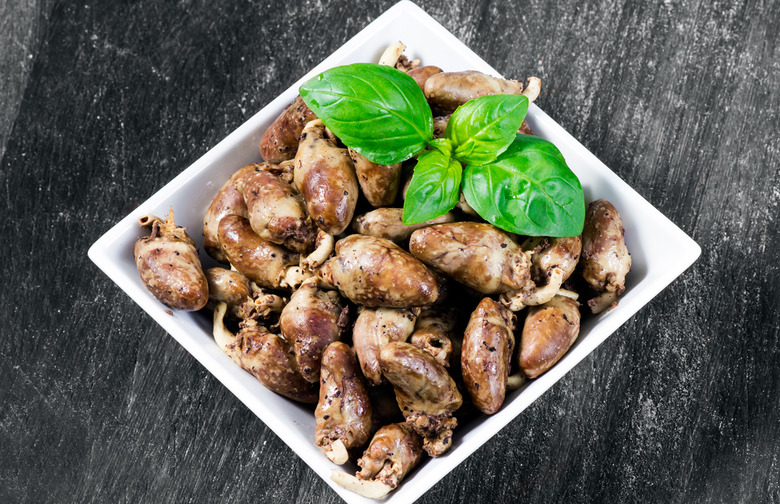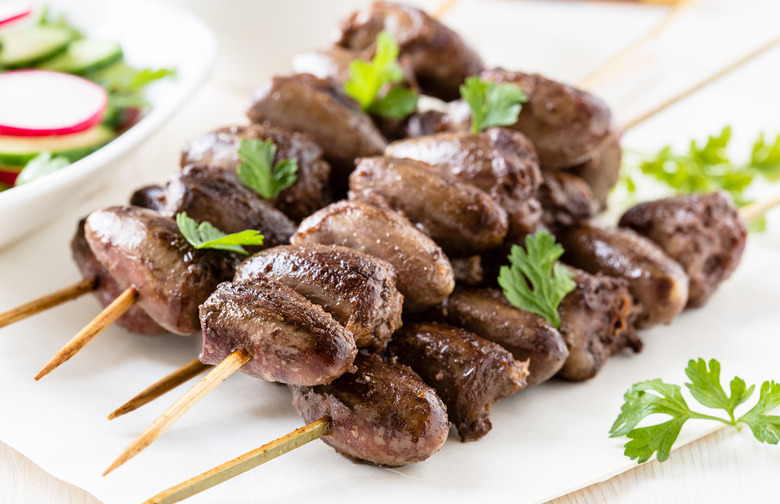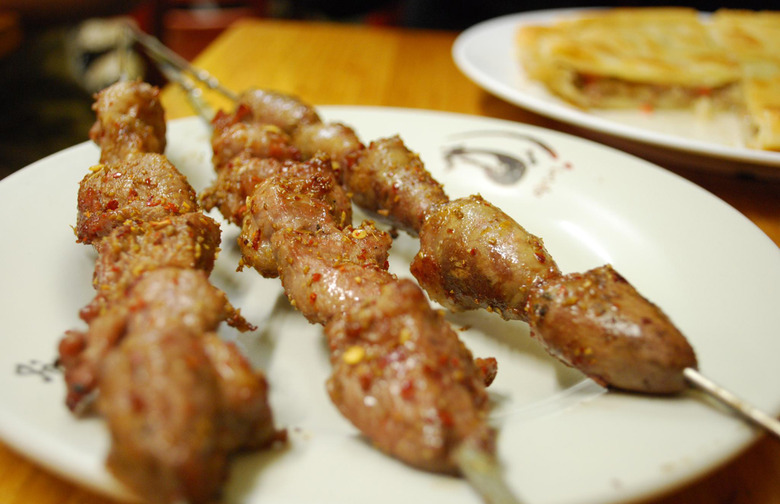The Ultimate Valentine's Day Food: Delicious, Healthful Animal Hearts
The Ultimate Valentine's Day Food: Delicious, Healthful Animal Hearts
Grass-fed and organic beef, chicken, and lamb hearts are full of protein and other nutrients that your body needs to keep itself going. Look to organ meat as an inexpensive, healthy swap.
Collagen and Elastin
Collagen and elastin are naturally occurring structural proteins that are generally associated with healthy skin. Collagen helps to make up roughly 30 percent of the proteins within a human body. Found in high concentrations in animal hearts (nearly double that of other cuts of meat), collagen and elastin help with not only skin elasticity, but also the structure of tendons, bones, ligaments, and various connective tissues. While collagen helps skin appear full and healthy, elastin keeps skin flexible and elastic.
Copper
Copper, a mineral that human bodies cannot naturally produce, helps with regulating heart rhythms, balancing the thyroid glands, increasing red blood cell counts, and healing wounds. Eating animal heart as well as other organs (e.g. liver) is one of the easiest ways to ensure that your body gets enough of this vital mineral.
CoQ10
Coenzyme Q10, more commonly referred to as CoQ10, plays a pivotal part in helping to create ATP (an energy-directing molecule) within the body. ATP fuels the activity of nearly every cell and, in turn, the energy of every living organism. Animal hearts are one of the highest naturally-occurring sources of this vital coenzyme.
Easy on the Wallet
In general, raw organ meat is less expensive than other sources of meat like prime cuts of beef and boneless, skinless chicken breasts. Swapping one or two meals a week to organ meat will not only provide your body with important vitamins and minerals, but it will also help keep money in your wallet.
Grass-Fed Options
The grass-fed movement is alive and well, and it's forward-thinking to look to grass-fed products when looking for not only heart but all organ meats. Heart and other organ meat from cows fed a corn-based diet (or one that introduces chemicals and pesticides) is cheaper in price, but also much cheaper in quality.
Protein
Animal hearts are extremely rich in protein content. Comparable to a boneless, skinless chicken breast, a three-ounce serving of beef heart contains 95 calories and a whopping 15 grams of protein.
Selenium
Selenium supports normal thyroid function as well as the protection of antioxidants. In addition to animal livers, hearts are one of the best animal-based sources of this cancer-fighting mineral.
Taste
Heart, once properly butchered, is a very lean muscle. Many prefer to cook beef heart to a medium-rare temperature. Its taste is similar to that of brisket or a steak.
Variety
Animal hearts can come from a few different animal sources. Grass-fed chicken, beef, and lamb hearts should prove the easiest to find.
Vitamin K2
Vitamin K2, a fat-soluble substance similar to vitamin A, helps the body to absorb and use essential minerals in order to maintain healthy arteries and bones. With mysterious origins (this was once referred to as Activator X), vitamin K2 was discovered while looking at how tribes of a time long passed used to eat raw animal hearts. This was linked to longer lives and fewer instances of degenerative illness.
